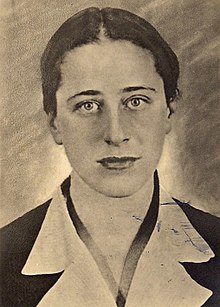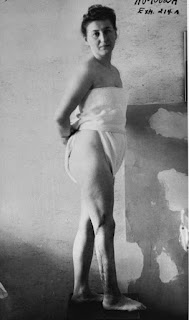"It's hard to express myself at that time because I was nervous. Look at yourself. You're a bright human being. You are. You're very intelligent. And it was frustrating because it was like a living hell. There was no privacy. It was like living in a concentration camp. I've been beat up so many times when I lived at Willowbrook. I got beaten with sticks, key chains, keys. They'd kick my head through the wall. Only you name it, I had it. I'm not going to die in the institution because none of my family came to see me that often. They called them every five, ten years. The saddest thing is on Sundays when parents would come visit their kids. And I'd look out the window to see who would come and see me. When the clock struck 3:00 in the afternoon it was disappointing because nobody came to visit me or brought me cookies, ice cream, or toys, and stuff like that. " Testimony of Bernard Carebello on his treatment during his forced stay at Willowbrook State School
The conditions at Willowbrook (and in various other institutions) were so deteriorated that Hepatitis A was rampant throughout the facility. Just as Ravensbrück doctors, Rolf Rosenthal, Herta Oberheuser and Gerhard Schiedlausky or Auschwitz doctor, Joseph Mengele performed painful and inhumane experiments on their concentration and extermination camp victims, Willowbrook's doctors, Saul Krugman and Robert W. McCollum performed callous Hepatitis A experiments on the children of Willowbrook. It was noted by Paul A. Offit that, "In an effort to control outbreaks of hepatitis, the medical staff at Willowbrook consulted Saul Krugman....Krugman found that Hepatitis developed in 90 percent of children admitted to Willowbrook soon after their arrival. Although it was known that Hepatitis was caused by a virus, it wasn't known how hepatitis virus spread, whether it could be prevented, or how many types of viruses caused the disease. Krugman used the children at Willowbrook to answer those questions. One of his studies involved feeding live hepatitis virus to sixty healthy children. Krugman watched as their skin and eyes turned yellow and their livers got bigger. He watched them vomit and refuse to eat. All the children fed the hepatitis virus became ill, some severely. Krugman reasoned that it was justifiable to inoculate retarded children at Willowbrook with hepatitis virus because most of them would get hepatitis virus anyway. But by purposefully giving the children hepatitis, Krugman increased that chance by 100 percent." Nazi doctors showed the same lack of empathy. In November 1944, Georges Andre Kohn and several other children used for Nazi medical experimentation at Auschwitz, were injected with tuberculosis cultures in Neuengamme concentration camp which resulted in the children becoming severely ill. The justification being that the victims were seen as sub-human.
Eugenics is the belief that you can improve the human population through controlled breeding. The Nazis believed in racial purity and one of their prime targets was the mentally and physically disabled. In 1933, the laws "Law for the Prevention of Genetically Diseased Offspring" and "Law Against Dangerous Habitual Criminals" were passed which allowed for the forced sterilization of thousands of mentally and physically disabled individuals throughout Germany. In 1927, Virginia passed the Racial Integrity Act of 1924 which sought to the rise of forced sterilization in the mentally and physically disabled community and the prevention of interracial marriages. By 1930, a majority of U.S. states (30) had passed laws that regarded eugenics. Dr. Joseph S. Dejarnette who was the superintendent of Western State Hospital lobbied for the passing of the sterilization act. Along with writing poetry about eugenics, Dejarnette often complained about how the forced sterilization of the mentally and physically disabled needed to be seen as compulsory.
Bernard Carebello was diagnosed as "mentally retarded" at the age of 3 and abandoned at Willowbrook State School by his mother. Carebello was not allowed to leave until he turned 21, when it was revealed that he had been misdiagnosed and instead it was found that he had Cerebral Palsy. While at Willowbrook, Carebello was not attending any school whatsoever, was abused, and denied hygienic conditions.
"You can't treat humans like a dog in a kennel. There is no place where you can mass produced care, compassion, and concern for people. It is impossible. It is fundamentally unsound. The assembly line works for add-in does not work for people.
People need humanity." - Geraldo Rivera, Unforgotten: 25 Years After WillowbrookCarrie Buck was a victim of Dr. Joseph Dejarnette's advocacy for compulsory sterilization of the mentally and physically disabled. After being raped, Buck was help captive at the Virginia State Colony for Epileptics and Feebleminded for feeblmindedness, promiscuity and incorrigible behavior. After advocating for herself in Buck v. Bell, the United States Supreme Court supported the sterilization procedure in finding that it did not violate the constitution.
This is a fictional depiction of Nazi eugenics. The miniseries, Holocaust, followed the Weiss family throughout the war. The first few minutes detail the terrible fate of Anna. Raped by Nazi officers, Anna went into a psychosis. A doctor sent her to a Sanatorium where upon arrival, her and the other patients were gassed.
This is Geraldo Rivera's expose, "Willowbrook: The Last Great Disgrace" from 1972 in it's entirety.
Thank you for taking the time to read this article! Please share and comment about what you think!
Links for further research:
1. http://disabilityjustice.org/the-closing-of-willowbrook
2. http://www.library.csi.cuny.edu/archives/FindingAids/fa0017.htm
3. https://www.ushmm.org/wlc/en/article.php?ModuleId=10007057
4. http://exhibits.hsl.virginia.edu/eugenics/4-influence/



